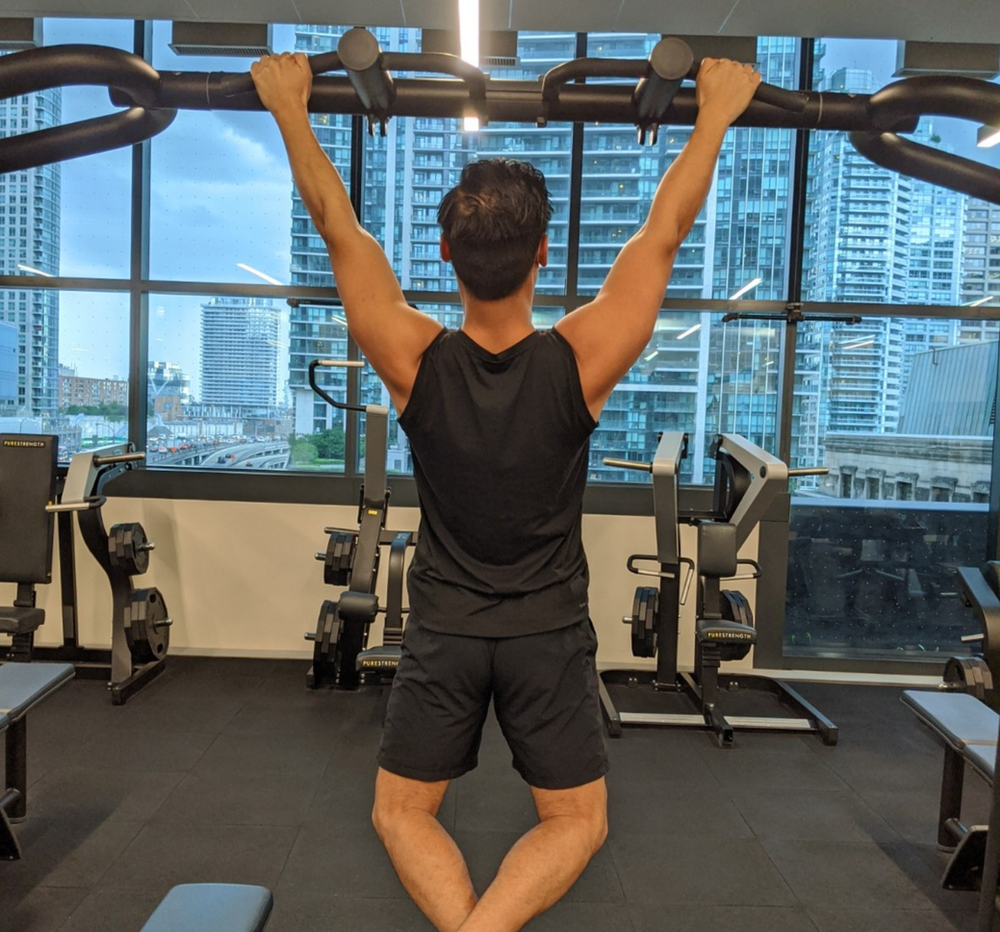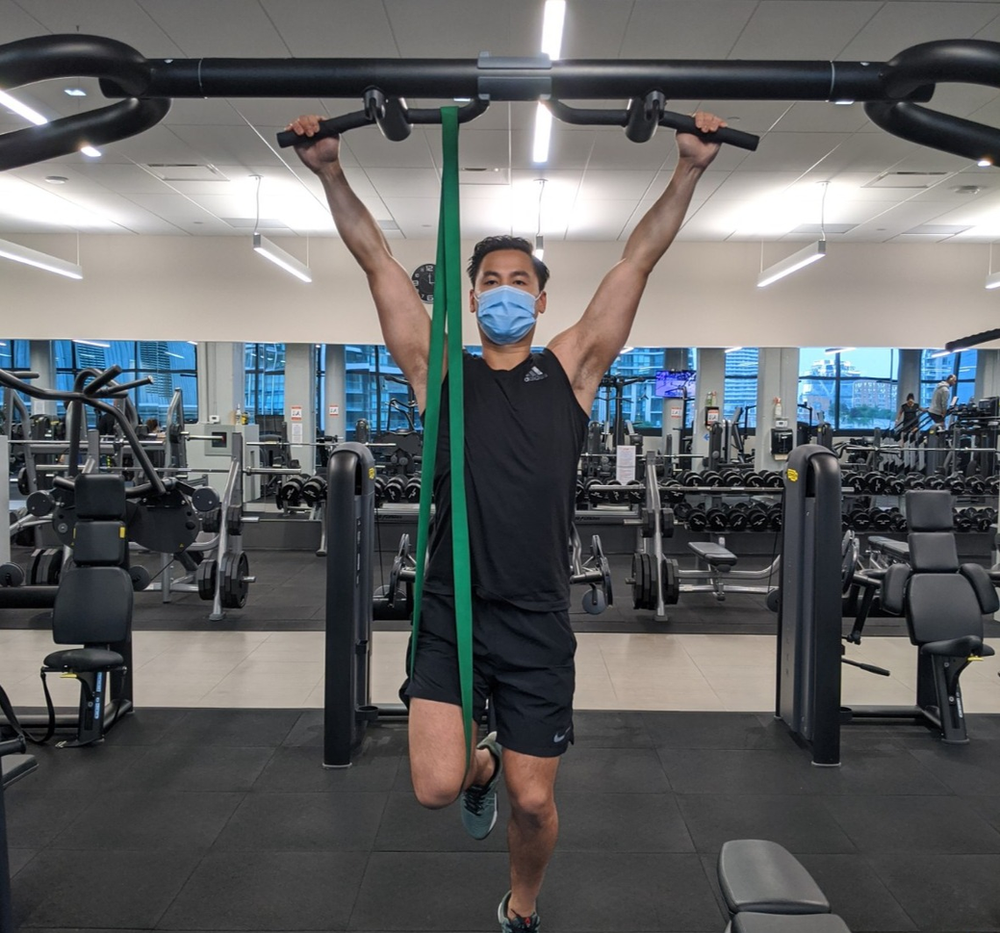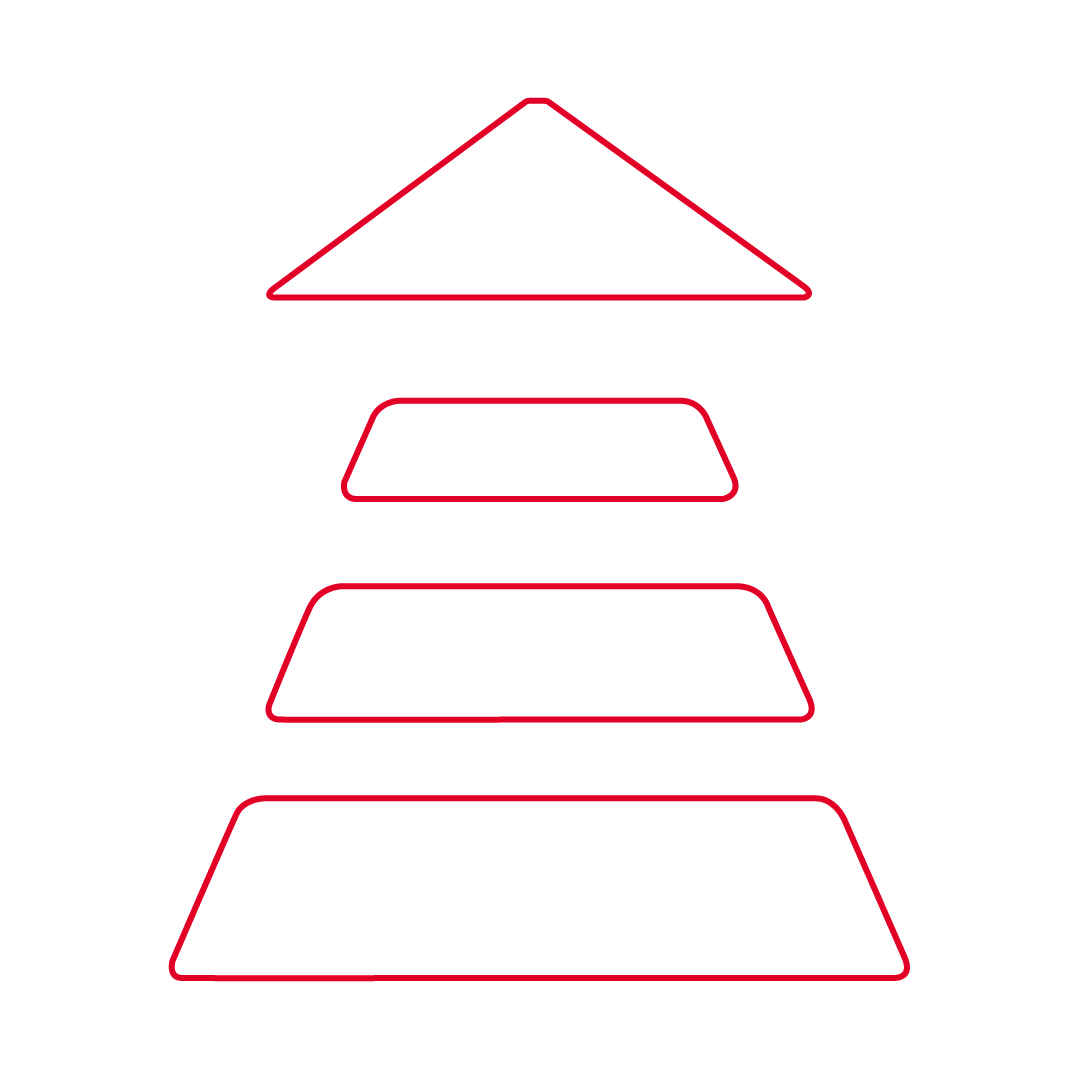So you have hurt your shoulder after pull ups and after a few months of rest and Physio you want to know how to get back to doing this exercise. I have personally been in this position myself. Here are the pull up progressions I used to rehab my shoulder and what I teach my patients.
Scapula Setting:
The cause of most shoulder injuries during a pull up is a forward shoulder position when performing the exercise. This series of exercises will teach you to properly engage your back muscles and set your shoulder and scapula back to safely perform a pull up and prevent re-injury. Hang onto a bar, since free hanging will aggravate your shoulder, engage you biceps slightly by bending your elbow. Pull your shoulder slightly in and down. Hold this position for 3 seconds. This scapular retraction and depression will recruit the middle and lower trapezius to stabilize your shoulder during pull ups. It is important to maintain this scapular position in the next exercise progressions.

Negative Pull Ups:
The next step is to strengthen the rotator cuff and performing a negative pull up is the best option. Hop off a bench and start with your chin above the bar. Keep you scapula slightly pinched in and down. As you lower you body your trapezius will control the upward rotation of your scapula. Increase the difficulty of this exercise by slowing down each negative repetition. Play around with different grips to train chin ups, wide, and narrow grip pull ups.
Banded pull ups:
This is a great way of training both the concentric and eccentric portion of a pull up while using a band to unload your body weight. Place the band around your knee. This is easier and more secure than placing the band around your foot. Remember to pull your scapula down and in during each repetition. Keep your core and gluts tight also, this will make you more stable, and prevent your body from swinging. Play around with different concentric reps: explosive and fast or slow reps. However keep the eccentric portion of the movement slow and controlled. Use the different colour of bands to provide various level of assistance. Green is the thickest and provides the most assistance while red is the thinnest and provides the least assistance.

Bench assisted pull ups:
This is another way to unload your body weight during pull ups. Place your foot on a bench and keep your upper body upright and parallel with the direction of the pull up. Avoid a body weight row where your upper body is perpendicular with the direction of pull. Play around with the tempo of each rep and add static holds.

*pic: foot on box, body upright, parallel with direction of pull

